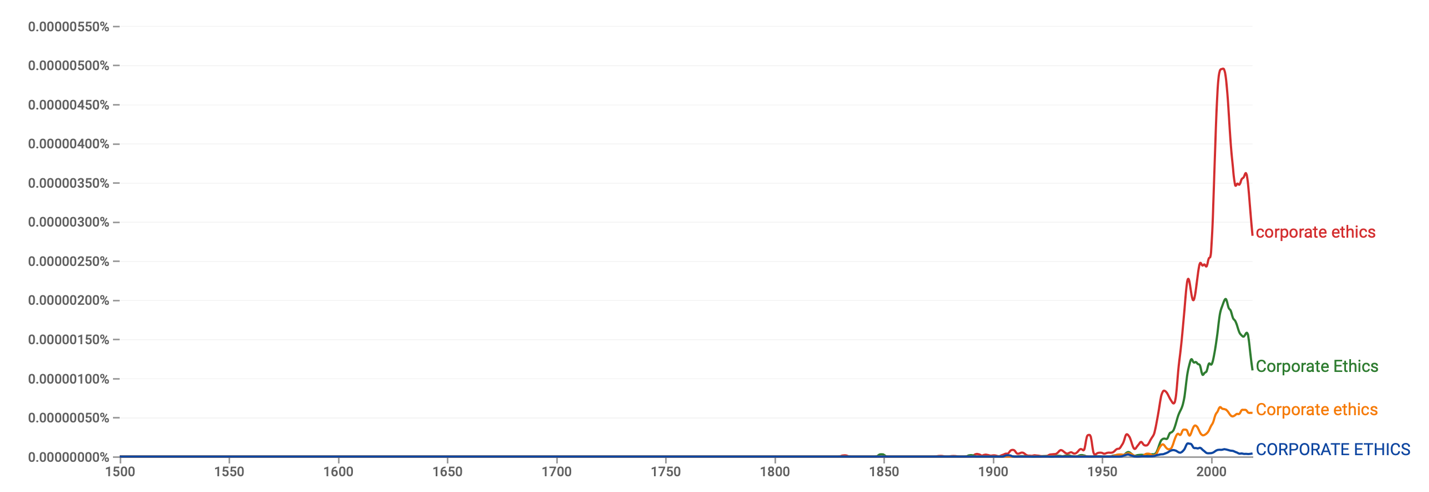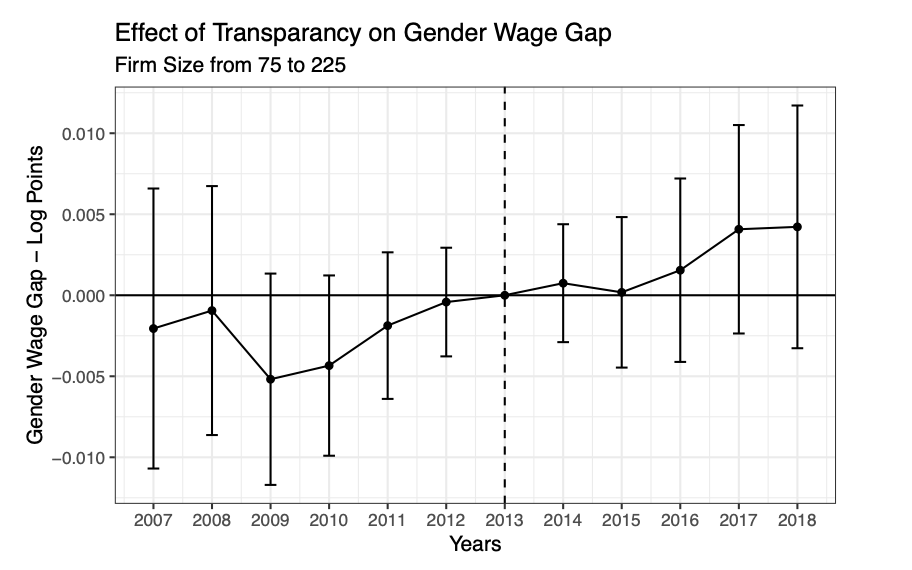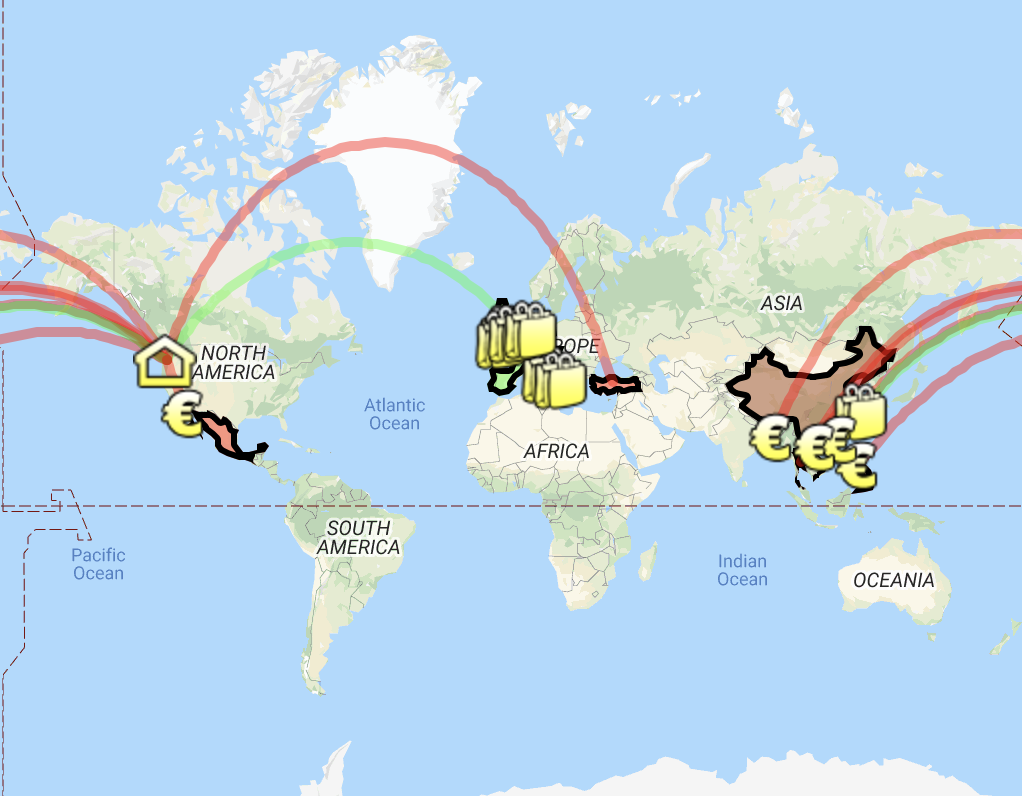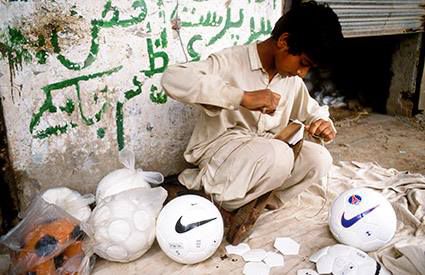Introduction
One of the remarkable features of the globalization era is the wide availability of information, including of a preferably closed nature. In particular, with the development of information technology, every individual can share their opinions and experiences online, which can generate a public outcry if the issue being communicated proves to be significant. It is partly because of this — and, of course, mainly because of the development of models of public morality — those businesses tend to create a favorable corporate environment and payroll system within. Now that business reputation is one of the critical factors in effective marketing, the brand image carries high weight. However, in an effort to achieve high-profit margins and secure a stable niche position, businesses may circumvent some of the ethical principles by encouraging child labor or using near-slave labor in countries with low-cost industry markets (Allhoff et al., 2016). Nike, a world-renowned athletic apparel brand, has often been the centerpiece of media scandals that have accused it of repeated immoral misconduct in pursuit of profits.
This paper explores Nike’s historical experience as one of the industry leaders in sportswear management of ethical principles. It is acknowledged and discussed in detail that the company has had several proven acts of immoral behavior related to low wages in sweatshop factories, the use of child labor, and corporate discrimination. However, it is also recognized that Nike respects and values its public reputation and brand image, and it is for this reason, the company is undertaking several essential operational strategies to eliminate previously publicized conflicts. This term paper is valuable and relevant material in the field of production management and especially human resource management.
Clarification of Terms Used
It is paramount to theorize the terms and concepts used in the following sections in order to avoid ambiguity in the reading. One of the central metrics under which Nike has been repeatedly accused is the living wage. This term refers to the living wage, unique to each country, which is sufficient for an individual or household to function normally — but not excessively — in order to purchase food and non-food services (Ravenscraft, 2019). Roughly speaking, the higher the cost of living for a country, the more expensive life is for an individual in that country. Thus, it is critical for a multinational company with a workforce in different geographic regions to monitor the consistency of the wages paid with the living wage. In addition, a thorough understanding of the term “child labor” is essential. The interpretation of this term is closely linked to the primary association that arises when reading it — it is primarily about the use of child labor by companies in order to save money in production. UNICEF points out that one in ten children in the world experiences child labor, a procedure that is illegal and forbidden by most jurisdictions (UNICEF, 2021). Child labor not only deprives children of their childhood but also poses a severe threat to an individual’s health and emotional well-being from an early age. At the same time, the notion of discrimination using sexual and psychological abuse carries high weight in the discussion of corporate behavior at Nike. Within such a broad term, the work understands not only instances of molestation of co-workers, inappropriate jokes, and requests for sexual favors, but also gender-based discrimination (Yadegar, 2019). More specifically, it is common for companies to pay women lower wages than men for doing the same work.
Each of the three terms discussed above is directly relevant to a comprehensive definition of corporate ethics. In today’s world, this term has become extremely common, as ensuring a supportive and constructive organizational environment is one of the essential concerns of today’s corporate agenda. Indeed, if one turns to Figure 1, one can clearly see that the use of this phrase in print media has only become prevalent in the last sixty years, as the world has entered the era of globalization processes. In general, however, corporate ethics is commonly understood as previously established standards of rules and correct behavior in a business environment to encourage integrity among participants and gain the trust of stakeholders, be they investors or politicians (Schroeder, 2019). Thus, having corporate ethics is critical for any company, and its violations can cause a business recession.

The Scale of the Project
It is impossible to imagine a modern company interested in increasing sales and, consequently, profits but does not care about the business reputation of its brand. Any company should manage its image and create favorable conditions for spreading correct, competent, and attractive information about itself in terms of marketing strategies. A clearly built reputation allows a company to build up a customer base and thus position itself in a niche industry market in the right way. It works to maximize the positive effect, mainly when the ideals of corporate practices and business mission are reflected in the minds of specific groups from the audience – in this case, the number of new clients willing to share the philosophy of the company is actively expanding. However, reputation is a fickle and highly unstable category that can be destroyed. In this context, the words of Warren Buffett, an American businessperson and one of the most influential investors in the world, are particularly noteworthy (Shamma & Bisht, 2021). Buffett once said that a company’s reputation could take years to build, but it can be lost in a matter of minutes. This saying perfectly describes the overall scope of this term paper, namely the loss of Nike’s reputation when it publishes data on repeated violations of corporate ethics.
This paper, however, is not intended to discredit Nike’s experience or to put the company in an unfavorable light. Adhering to the strict framework of critical analysis in the research, no personal opinions or the author’s experience with the company are present in this paper; but instead, it presents published facts and available statistics. In addition, the lack of bias against Nike is confirmed by the structure of the study. After examining the specifics of the sports brand’s historical experience with the subject of ethics violations, the reader is invited to learn about the strategic operational decisions that Nike has implemented today to minimize damage to its reputation and to correct the company’s internal culture. Thus, this term paper is a critical review of the company’s experience and an exploration of the applicability of ethics theory to Nike.
Literature Review
The Importance Of Ethics For The Company
The importance of corporate ethics, or business ethics, to a company can hardly be overstated. The general structure of such ethics for absolutely any company globally, regardless of location, is based on two fundamental pillars. Firstly, it is compliance with the laws and legal regulations of the country, beyond which the company cannot go. This includes any environmental, social, or economic regulations of the region. Some of the examples that explain management’s strict need to follow this part of business ethics might include setting a living wage, banning child labor, or poaching, and the need to follow the established tax system. Second, without going beyond the law, each company is free to set its own guidelines that delineate corporate ethics. This is the unique experience of each company, although many aspects of such a culture are widely borrowed. For example, the imposition of fines for systematic tardiness, lack of subordination, and theft of corporate property can be seen as common restrictions that shape the corporate culture of most companies. At this point, however, it is critical to recognize that corporate ethics are dynamic and fickle: changing generations shape new aspects of this culture, resulting in changing management practices at work. Perhaps the most famous example of the variability of business ethics is the gender wage gap. Figure 2 shows that the values of this gap change over time. In isolation from other influencing factors, it is safe to say that the changing role of women in modern society becomes an essential predictor of the need to change corporate governance rules on pay.

It is important to note that the importance of corporate ethics goes beyond maintaining employee morale and ensuring a favorable atmosphere within the company. There is evidence to show that having transparent, ethical principles in a company’s marketing strategy qualitatively raises the consumer perception of a product and thus increases company profitability (Lee & Jin, 2019). Moreover, there is a growing trend toward ethical investing, which implies choosing a company to invest in based on business and social ethics (Salmi, 2020). However, both discussed aspects are directly related to the business reputation of the brand, which makes the perception and investment possible. A company’s reputation is one of the primary mechanisms for determining its attractiveness in the industry market. Modern companies indeed try to improve their brand reputation in order to achieve their strategic goals, but this may not always be realized.
Violation of Nike’s Ethical Principles
Nike is one of the market leaders in athletic apparel and has worldwide recognition. The firm’s total number of official retail stores worldwide was maxed out at 1,182 by 2018, but due to the detrimental effects of COVID-19 on the global economy, that number has declined by 11 percent, to 1,048 in 2021 (Tighe, 2021; Haleem et al., 2020; Gans, 2020). However, the company’s global sales continue to increase and hit a sixteen-year high by 2021, with Nike earning over $44538 million (Tighe, 2021). The above facts make it clear that Nike is an essential strategic player in the global sportswear market, which means the company has a large customer base. In this environment, as previously stated, the company needs to take care of its business reputation and avoid having acts of unethical behavior, even in an effort to earn large profits. While Nike has tried to live up to this agenda — the results of these attempts are reported in the following sections — this has not always been the case.
One of the main criticisms toward Nike has been the use of sweatshops in the manufacture of athletic apparel and footwear over a long period. Sweatshops literally refer to the creation of critical, disruptive, and destructive working conditions in shops and factories in which employees are forced to give their all, sweat, in order to earn a minimal quality of life. This phenomenon was particularly relevant to Nike’s operational strategy in countries with cheap labor, where the company’s production facilities are present. Figure 3 clarifies that the central manufacturing regions are Mexico, Bangladesh, Vietnam, China, and the Philippines. Nike had been practicing “slave labor” in developing countries for decades until social activist Jeff Ballinger made this information public in 1991 (Lerman, 2019). Notably, unlike the current strategies of businesses responding quickly to public outcry, Nike continued to use sweatshop factories in Indonesia. Nike began to introduce changes to its production management only after another wave of widespread public criticism in 1998 from the USAS (Williams, 2020). This problem clearly violated Kant’s theory of ethical behavior, according to which people should be seen as an end and not a means (Gordon & Nyholm, 2021). On the other hand, Nike used people as a means to maximize profits, ignoring the need to care about their well-being.

The second significant problem with which Nike’s image is associated is the lack of transparent information about workers’ living wage coverage in Asian countries. A multinational company must maintain a global image, so employee payments must be made according to regional living wages. Back in 2010, social activists rebuked Nike for failing to publish wage data because they suspected the sports brand of not covering living wages in a number of regions (Keady, 2010). It is still unknown exactly what was the valid reason for this decision on the company’s part. A provocative study by Martinez (2018) shows that even wages of three times the living wage would have been sufficient for the company to generate high profits and maintain its reputation, but this probably was not done. Thus, the lack of transparency is an important ethical issue for Nike.
Not the least of the criticisms of Nike’s ethical behavior is the use of child labor, which is always associated with severe violations not only of business ethics but also of local laws. There is strong evidence that Nike used illegal child labor to minimize operating costs (Aroyan, 2020). Figure 4 is not an absolute guarantee of an actual case in production, but its publication in the famous Life magazine was a powerful signal to the public and the company regarding the consequences of corporate strategic decisions. In this sense, it is clear that Nike management violated the principle of deontological ethics that forbids the use of a prohibited a means to an end (Chen, 2019). Taking advantage of the foundations of Machiavellian philosophy, Nike early on decided to invest in child labor, only caring about profits, and as a result, the company lost its image.

Positive Agenda Changes
However, in today’s business rules, it is clear that Nike could not stay away from the new ethic. As has been shown, public morality is exceptionally dynamic, and companies — especially multinationals — must be able to react quickly and adapt to change in order to remain customer-centric. Nike as a business, which through its fault, underwent several years of accusatory reputation and declining appeal, began to change at the beginning of the 21st century actively. One of the most notable changes has been the company’s transformation of its social agenda to recognize the rights of all people without exception: this is visible in Nike’s ads with Colin Kaepernick (Guardian Sport, 2018). In addition, in recent years, the company has been actively changing its advertising so that instead of people with “perfect” looks, the brand is advertised by ordinary people with “non-ideal” body proportions.
Nike management published the name and locations of all its factories, revised working conditions, and began transparent management of foreign labor in terms of operational changes. After the soccer ball and child incident, Nike publicly admitted that one of its factories had outsourced production to orphanages in violation of its outsourcing terms, which was the most likely reason for this photo (Figure 4). However, tracking and managing suppliers is a direct responsibility of the manufacturing company, and this in no way relieved Nike of responsibility. Since then, Nike has begun to invest in improving brand sustainability, whether that means publicly rejecting child labor, increasing employee salaries, not tolerating sexual discrimination, and encouraging engagement (Nike, 2021; Miller, 2019). Any comments by brand adherents that contradict Nike’s new ethics become a reason to break contracts with them, as was the case with Manny Pacquiao (Sato et al., 2020). Thus, Nike is on a path to fixing their reputation, and in gradual steps, they are succeeding.
Conclusion
In conclusion, it should be emphasized that Nike has undergone a dynamic in its historical journey from an industry market outsider and synonymous with sweatshop labor to a prominent leader with which other major brands and big names collaborate. The era of slave and child labor has rapidly disappeared in past decades, driven not only by a shift in the public moral paradigm but also by severe criticism of the company. Nike today is not the equivalent of Nike at the end of the last century; management, aware of its responsibility, seeks to correct the brand’s image in every way possible. In many ways, they succeed, as Nike in 2021 is no longer associated with slavery and low wages but is perceived as a sustainable brand with a conscious business mindset. In the future, the company still needs to ingrain its new image, and to do so, it should invest in inclusivity, improve product quality and accessibility, and, just as significantly, ensure complete transparency in key documentation.
References
Allhoff, F., Sager, A., & Vaidya, A. J. (2016). Business in ethical focus: An anthology. Broadview Press.
Aroyan, L. (2020). Case study: Nike & child labour. YouTube.
Cassidy, J. (n.d.). A map created by Jared Cassidy showing the global networks of Nike [Dataset].
Chen, Y. (2019). Deontology to judge the ethical business actions: The case of Takata. Open Journal of Business and Management, 7(02), 783-789.
Gans, J. (2020). Economics in the age of COVID-19. MIT Press.
Gordon, J. S., & Nyholm, S. (2021). Kantianism and the Problem of Child Sex Robots. Journal of Applied Philosophy, 1-16.
Guardian Sport. (2018). Nike releases full ad featuring Colin Kaepernick. YouTube.
Gulyas, A., Seitz, S., & Sinha, S. (2020). Does pay transparency affect the gender wage gap? Evidence from Austria. Journal Classifications: J08, 31(J38), 1-47.
Haleem, A., Javaid, M., & Vaishya, R. (2020). Effects of COVID-19 pandemic in daily life. Current Medicine Research and Practice, 10(2), 78-84.
Keady, J. (2010). Why is Nike afraid of disclosing what their overseas factory workers are paid? Huffpost.
Lee, J. Y., & Jin, C. H. (2019). The role of ethical marketing issues in consumer-brand relationship. Sustainability, 11(23), 1-21.
Lerman, A. E. (2019). Part four. Rebuilding Reputation. In A. E. Lerman (Ed.), Good Enough for Government Work (pp. 167-194). University of Chicago Press.
Martinez, A. J. (2018). A note on Nike’s wages, labor exploitation and profits in the garment industry. International Journal of Education and Social Science Research, 1(6), 43-50.
Miller, A. (2019). Inside the lines [PDF document].
Nike. (2021). Supplier code of conduct & code leadership standards [PDF document].
Ravenscraft, E. (2019). What a ‘living wage’ actually means. NYT. Web.
Salmi, T. (2020). Moral legitimacy of ethical investing–retail investors’ perceptions [PDF document].
Sato, S., Arai, A., Tsuji, Y., & Kay, M. (2020). When should a brand cut ties with a scandalized endorser? Communication & Sport, 8(2), 215-235.
Schroeder, K. (2019). 3 reasons why business ethics is important. Redlands.
Shamma, H. M., & Bisht, A. (2021). Ranking country reputation: A d8 perspective. Academy of Marketing Studies Journal, 25(4), 1-16.
Tighe, D. (2021). Number of Nike stores globally 2009-2021. Statista.
Tighe, D. (2021). Nike’s revenue worldwide 2005-2021. Statista.
UNICEF. (2021). Child labour. UNICEF.
Williams, M. S. (2020). Strategizing against sweatshops: The global economy, student activism, and worker empowerment. Temple University Press.
Yadegar, M. (2019). Have you been sexually assaulted in the workplace? YSM.